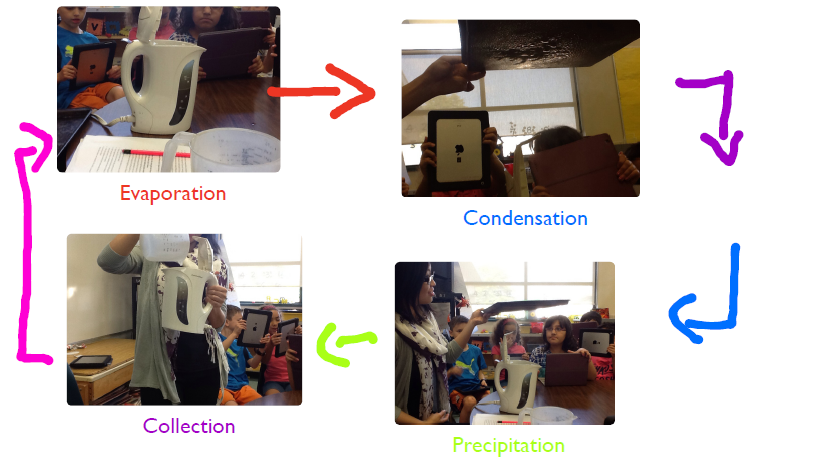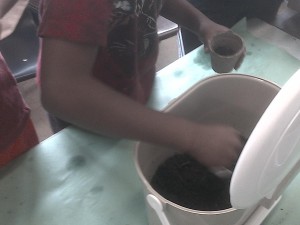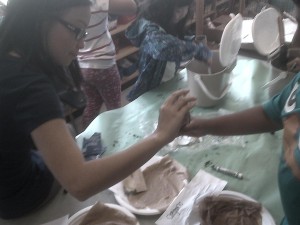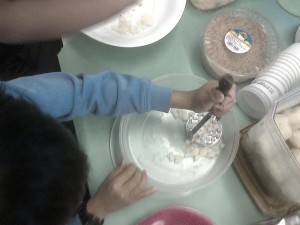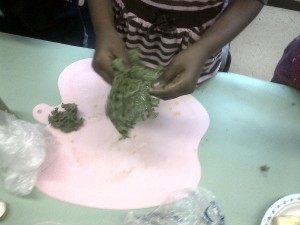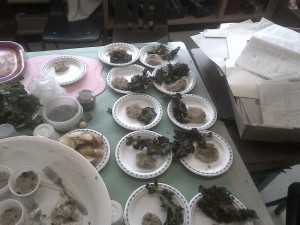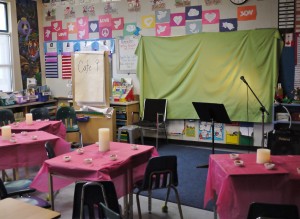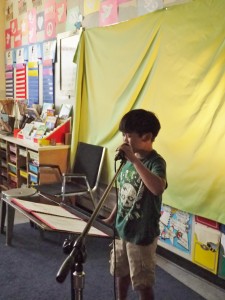Philosophy to Practice
For my practicum, I was placed in a Grade 2/3 classroom. Below are some of the lessons I did with my practicum class and for my CFE which is also a Grade 2/3 class:
Multimodal Learning
Water Cycle Lessons
- After learning the water cycle through a visual diagram and repeat-after-me with big action activity, students did a cut and paste activity.
- I did an experiment to recreate the different steps of the water cycle. Students represented their learning by using the iPad; they took pictures throughout the experiment and created a collage with recordings of what was happening with the Notability application. Below is an example of the recording/collage:
Hands-on Activities
Soil testing
- Students examined different types of soil around the school and identified the soil type through a flow chart.
Soil Erosion using Modeling Clay
- For our soil erosion lesson, students created a landscape using modeling clay with room for soil. We then used a straw to blow onto the soil to represent wind erosion and sprayed water to represent water erosion.
Planting Workshop at Woordwards (Grade 2/3)
- Students planted their own seedlings as they learn about the importance of soil in our environment.
Farm to Fork Workshop at Woodwards
- Students had the opportunity to create their own feast using foods that were harvested from the McMath Community garden. Not only did they learn how to cook with local produce, but they also learned about the nutritional values of non-processed food.
Just doing some potato mashing!
Massaging olive oil into the kale
TADA! Potato patties and kale chips!
Meaningful Learning with Real-world Connections
Dodgeball without Rules
- For our Government unit, I wanted the students to discuss why rules are important. Before we started, I took the students outside and divided them into 2 teams with a row of rubber balls in the middle. I told the students they could start playing when they were ready! The students caught on that they were supposed to play dodgeball, but were confused as they knew different versions of the game. In addition, there were no boundaries or rules given, the game turned into chaos. I gathered the students to create rules for the game and they played again. After the game, we discussed why rules were important and everyone agreed upon the values of guidelines.
Google Map
- For our measurement unit, we were studying non-standard units. Students used their shoes to find the distance between different areas of the school (eg. office to classroom) and used the measurements to solve problems. They calculated the distances from different places like Google Map does!
Year-end Party Proposals
- For our data analysis unit, students learned to collect data, and create a representation of the data using a graph. As a final assignment, students were divided into groups of 4-5 and were assigned the following topic to conduct a survey on: party theme, party snack, party food, party drink and party activity. The students collected data from the class and created a graph on chart paper. Afterwards, the students presented the findings to the class.
Learning through Renactment
Mock Election
- I created 3 campaign videos with the help of my peers to show the class. I explained to the class that they should choose the Mayor Candidate that believes in what they believe in so the decisions made are aligned with their beliefs.
Campaign
- After the mock election, students ran for their own Mayor candidacy and presented their campaign speech to the class.
Poetry Open-mic
- Students presented the poems that they have written to the class at a Poetry Open-mic at Cafe 9 (Division 9). We served pretzels during the intermission and the students loved every bit of it! They even acted as if they were at an actual cafe when asking the adults for a refill and left pretty good tips for us!
Inquiry-based Units
Poetry Unit
I used an inquiry-based approach for my Poetry Unit during my practicum. Our big question for the unit was: “What makes a poem?” On the first day, students examined a folder of poems in groups and came up with criteria that made up a poem. We examined the harder poems such as imagery poems as a class. At last, we created the following criteria for what makes a poem: special way of organizing the words, pattern/rhythm, creates an image, silly/funny, and/or rhymes.
We used those criteria to examine each type of poems we studied. For example, when we were studying riddle poems, students were able to tell that a riddle poem was a poem because it was describing a single topic. Throughout the unit, students were able to identify characteristics of a poem with different kinds of poetry we studied independently or in small groups. They were also able to discover the different patterns on their own. For example, students looked at the criteria and discovered the syllable pattern in Haikus!
